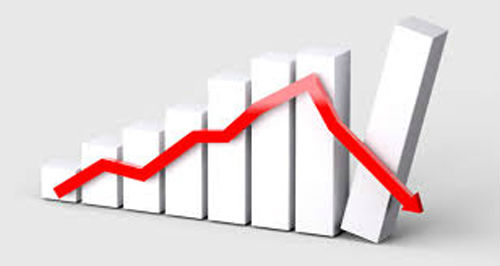|

Kathmandu (Nepal) – Sri Lanka is currently going through an economic crisis that is said to be the biggest in the last 70 years. There are indications that a similar crisis could befall Nepal, India’s other neighbour. The situation there has been dire since the beginning of the last financial year, but now the decisions being taken by the Government there have begun to prove this. According to trends since July 2021, Nepal’s foreign exchange reserves have been constantly declining. Nepal is left with money that could import goods for the next 6 months only. As a result, it has banned the import of many foreign goods.
Here’s a quick look at what’s going on in some of India’s neighbours as far as their economies are concerned. (By @pallavis05 & Debjit Sinha)https://t.co/BA4WBUmbGX
— IndiaToday (@IndiaToday) April 16, 2022
Inflation in Nepal !
Hundreds of citizens are flocking to the petrol pumps. Imports of important commodities such as bicycles, motor equipment, rice, textiles, gold, silver, cement, toys, wood, and coal have been banned. Imports of chillies, fish, dairy products, honey, eggs, non-vegetarian foods, and medical equipment have also been banned. As a result, the prices of all these items are rising.
According to the Nepal Fruit Wholesalers Association, the prices of fruits have gone up sharply.
1 dozen bananas – Rs 200
Grapes (per kg) – Rs 145
Lemon (per kg) – Rs 450
Ban on unnecessary lending !
The Reserve Bank of Nepal has directed all banks not to lend unnecessarily. Foreign exchange reserves should be used properly. The import of luxury goods has been banned.
(Credit : Republic World)
Drawbacks of relying on tourism business and Chinese debt !The tourism business is Nepal’s main source of income, but in the last two years, the Covid pandemic has hit tourism hard and caused huge losses to Nepal. According to a report, while Sri Lanka has a debt of over ₹3.88 crore ($51 billion), Nepal has a debt of over ₹1.52 crore ($20 billion). Even Sri Lanka did not realise how China had deceived it into a debt trap. Nepal is also heavily influenced by China. China’s influence can be seen in several of Nepal’s policies. |

 The US imposes 37 per cent tariffs on Bangladesh
The US imposes 37 per cent tariffs on Bangladesh An American woman, acknowledging the greatness of Indian culture, decides to raise her children in India
An American woman, acknowledging the greatness of Indian culture, decides to raise her children in India India has a coastline of 6,500 km on the Bay of Bengal
India has a coastline of 6,500 km on the Bay of Bengal US President Trump imposes 26% trade tariff on India
US President Trump imposes 26% trade tariff on India US strikes on Houthi terrorist sites in Yemen
US strikes on Houthi terrorist sites in Yemen US court dismisses the claim of Khalistani terrorist Pannun, a US citizen !
US court dismisses the claim of Khalistani terrorist Pannun, a US citizen !